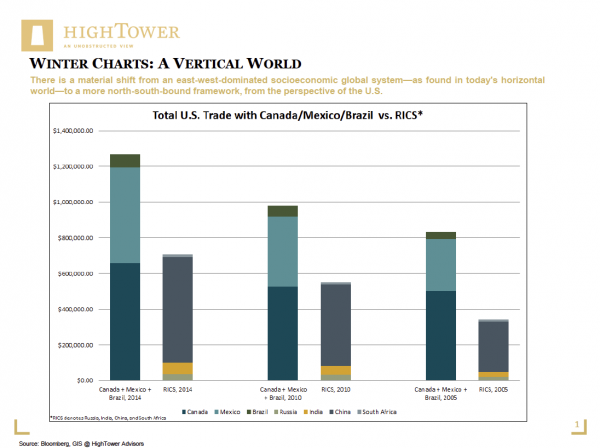“Winter Charts” is a series of current financial topics explained in dots, lines, and only a few words—just the right “mix” to concisely convey ideas for critical thinking about investing.
The emergence of A Vertical World remains one of my core convictions; the U.S. will continue to “turn within,” not dissimilar to the post-WWI era when this nation was committed to moving off of the world’s center stage. With a new political and economic center as an aspirational framework, a focused revival and expansion of the 1994-established free-trade NAFTA framework should be the outcome. I continue to foresee a material shift from an east-west-dominated socioeconomic global system—as found in today's horizontal world—to a more north-south-bound framework, from the perspective of the U.S.
Last year, Mexico undercut China's cost of labor, and it may very well continue to claim its place as an increasingly prominent production hub and trading partner to the U.S. Brazil, on the other hand, even with all difficulties aside, has emerged as a powerhouse of resources (arable land, commodities, water), and is expected to advance its economy further with the adoption of more refined democratic principles. Canada, as one of the largest trading partners to the U.S., is not only an economic anchor, but will lend further credibility to a North American power-balance versus the rest of the world.
My once anticipated trend is increasingly becoming clear: a now more-domesticated and energy-independent U.S. is looking closer to home in pursuit of its economic needs. This development, in turn, may deemphasize the importance of Southeast Asian economies, not only on a trade basis, but potentially even from an investment perspective.

Matthias Paul Kuhlmey is a Partner and Head of Global Investment Solutions (GIS) at HighTower Advisors. He serves as wealth manager to High Net Worth and Ultra-High Net Worth Individuals, Family Offices, and Institutions.
